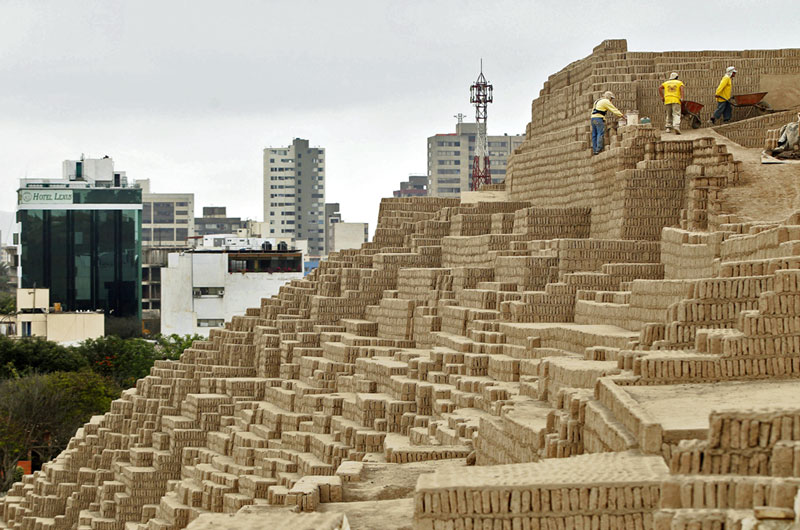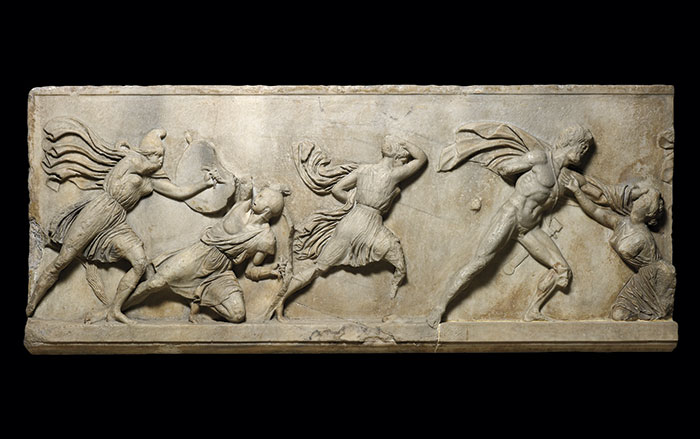
(Enrique Castro-Mendivil/Reuters/Landov)
More than a thousand years ago, an adult and three small children were buried high atop Huaca Pucllana, a ceremonial complex in the center of what is now the modern city of Lima, Peru. Their bodies had been carefully wrapped in several layers of textiles and leaves, and each of these bundles was tied up with braided rope made of foliage from the lantana plant. They were then sealed into a sturdy tomb with a wooden ceiling covered in straw and clay bricks, where they remained for centuries, undisturbed by changing ancient rulers, Spanish conquistadores, and powerful earthquakes that often destroyed much of the city.
For almost 30 years, archaeologist Isabel Flores Espinosa has been working at Huaca Pucllana. Dedicated to the god of the sea, the complex, built by the Lima culture between A.D. 450 and 700, includes the seven-tiered, 82-foot-high Great Pyramid, public squares, sidewalks, and access ramps, all made of unfired clay bricks. In the early eighth century, the Wari civilization conquered the Lima and occupied the southern highlands, including this area of the central Peruvian coast, until about A.D. 1000. The Wari often reused existing infrastructure they found in conquered regions and, after the Lima abandoned Huaca Pucllana, they used it as a cemetery until the ninth century.
Over the last three decades, Espinosa and her teams have found dozens of tombs at the complex, many filled with luxuries including finely woven textiles, and silver and gold artifacts, leading her to believe that the graveyard was reserved for elite members of Wari society. The newly discovered tomb is typical of the Wari—their tombs usually contain multiple burials and bundled bodies, one or more of which are often children or young girls sacrificed to the gods of the land and sea.
Of the 62 excavated so far at Huaca Pucllana, according to Espinosa, only this tomb was found completely undisturbed. Although the bundles themselves have not yet been completely analyzed, the discovery of artifacts associated with textile manufacture—bags made of woven wool and cotton filled with spindles and needles—leads Espinosa to believe that the larger bundle contains a female who may have been connected in some way to the textile arts. The Wari were particularly skilled weavers and depicted elaborate scenes and figures on textiles, which were usually made of cotton warps and camelid fiber wefts spun from llama, alpaca, and vicuña hair.
Currently Espinosa is working with an interdisciplinary team that includes a physical anthropologist, a textile specialist, and a botanical expert. They are X-raying and preparing the bundles for unwrapping, after which Espinosa hopes to establish the sex of the adult and infant burials, their possible familial relationship, and their cause of death.











